Reflecting on Saturday, November 23rd 1963, Lyndon B. Johnson confessed, “You don’t learn anything when you’re talking.” It was the day after John F. Kennedy’s assassination and Johnson was thrust into the presidency. He was smart enough to know what he didn’t know — and in such a delicate time, what he needed to be doing was listening attentively and learning from those around him.
When we talk we are often just repeating what we already know. But when we actively listen we can get outside of our own heads, stretch our minds, and widen our perspective.
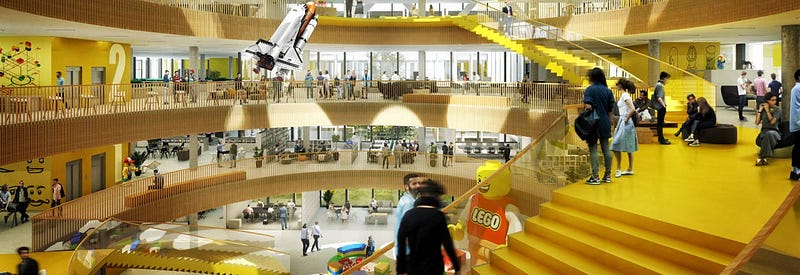
The challenge is that better ways of working can’t be realised without first giving new ways a spin. In work cultures that are resistant to change, an appetite for experimentation is often like driving the wrong way on a one-way street. But herein lies the opportunity: to break from the convention with a healthy mix of patience and persistence.
The Workplace as a Classroom
Suppose for a minute that all of our workplaces doubled as classrooms. They’re places where it’s O.K to ask questions, to fail, to experiment, to relax in comfort as your fallible self. Here, it’s safe to try and even encouraged to follow your nose. You won’t be judged for any errors so long as you learn from them. And as you test new ideas and approaches to your work you perpetually learn and grow. Sounds like an ideal scenario from a Brené Brown talk right? Think again.
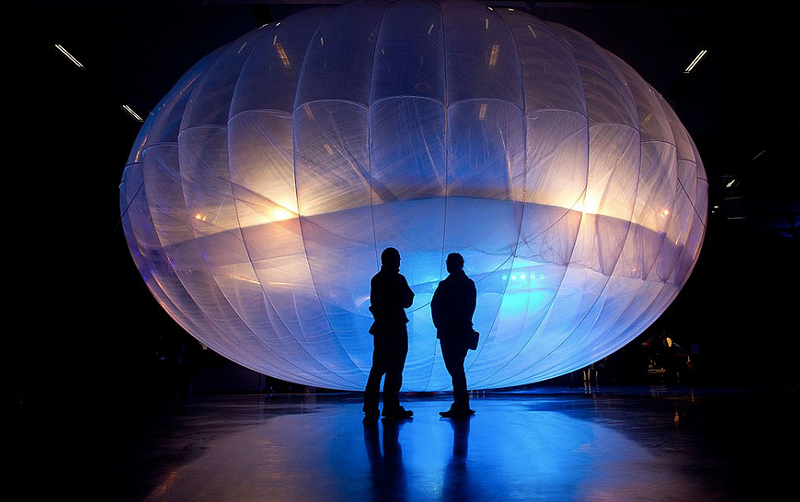
A self-dubbed ‘moonshot factory’, Google’s X is famous for turning zany ideas into reality. They design kites to generate electricity and create next-generation drones to deliver packages. Captain of the X ship, Astro Teller, appreciates that in order to fuel innovation you have to design an ‘emotional path of least resistance’. Mistakes are your friends and failure is unabashedly expected and rewarded.
At X, it’s a shared understanding that leaving the good behind means creating bandwidth to pursue the great. This is precisely why project Loon, which brings WI-FI to the rest of the world through massive stratospheric balloons, isn’t some loony idea still stuck on a sticky note.
Sure, we can’t all work at Google’s X nor can many companies operate with the same opulent mandate. But we can mimic the spirit of a workplace that is an engine for learning.
The bedrock of any learning organisation is its ability to continuously fuel the learning of people. By effect, this permits the organisation to transform itself explains systems scientist Peter Senge. Indeed, our world is just one big lab and our organisations are experiments we’re running inside. If our organisations aren’t evolving then neither are we. As our work grows to be more opaque—companies that learn to foster and reinforce learning will blaze the path towards innovation.
Knowing Yourself and Your Learning Style
Traditionally, we think of education as something that happens before work. You go to school, skill-up, and then set off on a career. Our education system is a direct by-product of the industrial age and treats complexity as something simple. But learning is nuanced and wholly dependent on the situation and cultural context of the student.
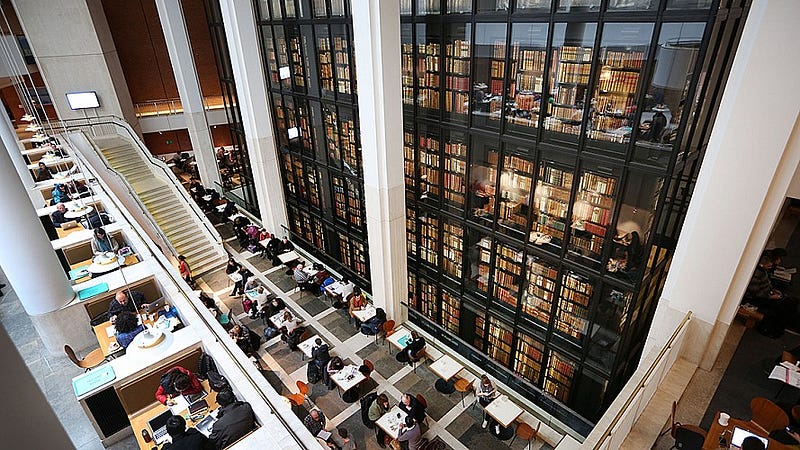
We all have different learning styles. Just think back to high school and the myriad of ways that you and your friends studied, or ‘appeared’ to be studying in some cases. There are countless theories on how people learn but what’s agreed is that everyone favours a different style. You might prefer to go it alone rocking an audiobook on a power walk. Or perhaps immersed in an intriguing group exercise is your bag? Maybe you’re frequently found in a buzzy cafe reading or in a quiet space feverishly writing. If you’re more kinesthetic in style — we might see you frantically pacing about committing things to memory. Or maybe like many I know, you love to geek out over diagrams and visual eye candy. You get the picture, literally.
In addition to particular learning styles, there are varying motivations in why we seek to level up in the first place. This is especially relevant as according to the World Economic Forum, enabling employees to reskill is the number one workforce strategy.
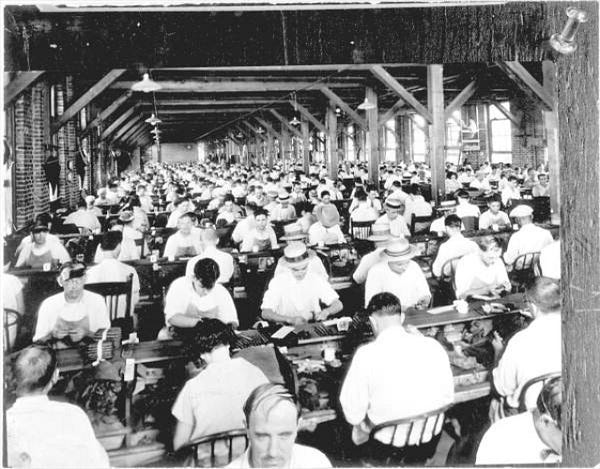
To be certain, rote learning worked well in a machine age. Many of the luxuries we enjoy today would not exist were it not for the industrial era’s decree for progress. Ways of working centred around synchronising, standardising, and maximising. Productivity was (and to many extents still is), measured by the straightforward correlation between labour and financial return. The problem, of course, is that we don’t live in this era anymore. Maximising worker well-being through learning is not some fluffy pipe dream, it’s now a sound business strategy.
Working with what we know and can learn, or knowledge work as it’s become known is ambiguous by nature. It requires that we take ownership of our own means of production. We must understand our unique talents as well as how we most effectively learn to make our best contributions. Sadly all too often we don’t act on this data as famed educator Peter Drucker noted.
Each day we self-select learning material which is most intriguing and relevant to our situation. We have all become expert curators of our personal learning systems, working tirelessly to convert information into tacit skills and knowledge so we can be and do better. Learners who favour reading know this all too well. If only the dynamics in the workplace were as evident. All too often our workplaces force us to read between the lines.
To perform at your best you need to manage yourself well. You must be self-aware and keep your peripheral vision popping to see those connections between industries, disciplines, people, places, and beyond. Projecting your abilities to others and being recognised for your skills and talent is important. But in this competitive market where everyone is parading as their own brand, what matters most is more than how competent you are. What really goes the distance is your potential to steadily contribute and become extraordinary.
It’s Getting Better All the Time

There is one inescapable truth of how we effectively learn. We all learn through imitation. We benefit from the experiences from those that came before us. We share and learn through stories, old and new, that enable us to make progress. Language (both of the body and tongue) lets us bring the past into the present and inject ourselves into the future. In this way, we’re able to ‘bind time’ — something no other species can do.
Until we reinvent our workplaces to be safe spaces to learn from trial and error, we will continue to stifle both innovation and the human spirit. Workers suffer when normative behaviour at work doesn’t tolerate failure. Learning something new and useful on the job and then being disempowered (or forbidden) to implement it leads to frustration, resentment, and piratism.
Because they were never designed as such, too many companies fail to provide environments for situated learning to take place. Reassuringly, progressive hiring practices now place less value on degrees and more on the hunger to learn. Bold leaders help their teams see mistakes as learnings enabling them to integrate these insights into new ways of working. Everyone grows to become better workers and better versions of themselves.
Thriving in the future of work is not about the skills your team possess but about the ones that can be developed. Learning how to learn is the new need to have meta-skill. With fortitude, we can change our workplaces so they house better stories for others to imitate and emulate. And through modelling our institutions on classrooms we can unleash an emotional contagion of continuous learning.
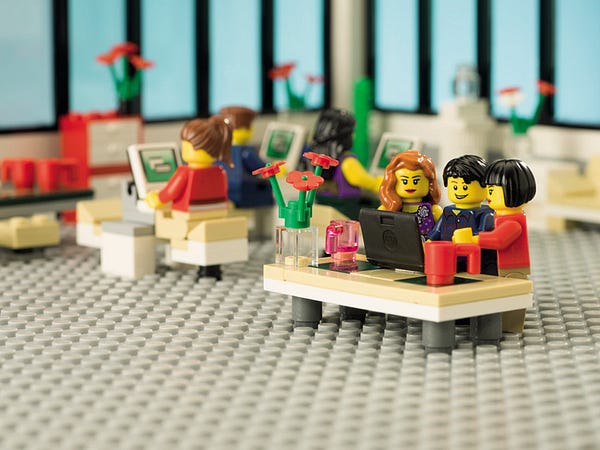
LEGO got the memo. Their ways of working have become the stuff of legend. The toy manufacturer is not only a learning organisation where it’s safe to fail, they purposefully inject play into the office— a quality integral to creativity. Hub experience manager Catherine Dernulc explains that workers can feel anxious and stressed in environments where it’s taboo to fail. “With stress, you lose your creativity. So now we try it — if it fails, ‘well let’s see what we can do with it’ — and we have these iterations.” LEGO is built on a culture of trust and freedom is par for the course. The company isn’t just building bricks, they’re building work so it gets better all the time.
Indeed as we ourselves change so will our approaches to work. We can choose to mitigate the toxicity in our workplaces or adapt to the changing nature of work. When provided with space to self-cultivate we also nourish those around us. Over time we will witness the collective working spirit soar —much like compound interest for the soul.
For things to get better they’ll need to get worse. And things aren’t great as they stand — the majority of the world’s full-time employees still suffer at work. Yet we sit on the cusp of a new dawn. More and more are seeing the unseen and unwilling to compromise in a workplace that stifles growth. They making work better simply by giving the new a chance.
This article first appeared at Inc.com
